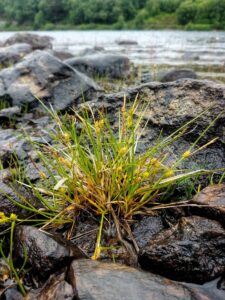2023 County Report for East Inverness-shire
Andy Amphlett
- 9258 records of 755 taxa were collected in 2023, from 264 monads, in 27 hectads.
- 84% of records were at 100m precision or better.
- 78% of the records were collected by the VCR, with 18 additional recorders providing the remainder.
- 10 new taxa for the vice-county were recorded; 2 natives: Carex × helenae ( demissa × C. viridula) and Montia fontana subsp. chondrosperma; 1 archaeophyte (Spergula arvensis var. arvensis), and 7 aliens.
- 7 taxa were recorded for the first time post-1999.
- Although only 4% of hectad records were new, 37% of tetrad and 57% of monad records were new.
- 752 records of 90 RPR taxa were recorded, of which 48% were new monad records.
- In addition, a further 1550 records for previous years were uploaded to the DDb.
- All records have been verified and validated.
- A new vice-county webpage was created - https://bsbi.org/easterness. Downloads available via that webpage are:
- A Checklist and RPR taxon list for v.c.96 (Excel).
- A list of taxa first recorded in v.c.96 since the publication (in 1978) of Mary McCallum Webster's Flora of Moray, Nairn & East Inverness (Excel).
- An analysis of altitudinal ranges of all taxa in v.c.96 (Excel).
- Ten maps of the vice-county, including four showing recording coverage.

